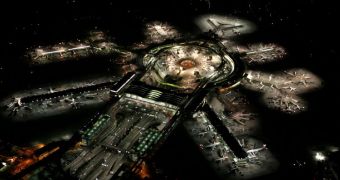One of the words most often used to describe today's worldwide energy usage patterns is wasteful. A lot of the energy we harvest at such a high cost is lost due to inefficiencies in the distribution system, but now experts have shown through mathematics that this wasted energy can be recaptured for use.
The mathematical framework that shows this is possible has not yet been proven in practice, but its creators say that the calculations have been double- and triple-checked, and that the theory is solid.
What the model does is provide a way of harvesting lost energy from a variety of sources, such as for example noises from airports, vibrations from transport infrastructure, wasted heat from electrical grids and power planets, and other types of junk energy.
The team of experts that developed the model was led by investigators at the University at Buffalo, who say that the point of origin for their calculation was a granular system of equal-sized particles.
Their work was founded on a concept known as Hertz’s Law, which explains how energy travels between spherical particles. The shape of the grain-to-grain contact areas is very important towards dictating the way in which energy will be passed along.
In scenarios where the particles are perfect spheres, applying a force on the first sphere in a chain will transmit energy bundles in an area of 3 to 5 sphere diameter-wide. But UB theoretical physicist Surajit Sen and his team found that changing the shape of the particles can influence how energy is transferred.
In a paper published in the June issue of the journal Physical Review E, the team shows that the changed particle shapes can drastically modify the way energy bundles are transferred through the system. “Mathematically, it’s correct. We have proven it,” Sen explains,.
“What this work means is that by tweaking force propagation from one grain to another, we can potentially channel energy in controllable ways, which includes slowing down how energy moves, varying the space across which it moves and potentially even holding some of it down,” he adds.
Sen holds an appointment as a professor of physics at UB. He conducted the work with former graduate student Diankang Sun and California Institute of Technology (Caltech) professor Chiara Daraio.
“What we have managed to accomplish is we have broadened Hertz’s theory with some extremely simple modifications. If I hit one end of the chain of particles, the perturbation will travel as an energy bundle. Now we can tune and control that energy,” the team leader says.
Sen believes that these modifications could be applied to electrical circuits too, which means that experts could soon develop means of harvesting energy from junk sources. This energy will be sent as pulses (packets) through the harvesting system, and will be converted into useful electricity.
The new study was made available by investigators at the Army Research Office and the US National Science Foundation (NSF), Science Blog reports.

 14 DAY TRIAL //
14 DAY TRIAL //